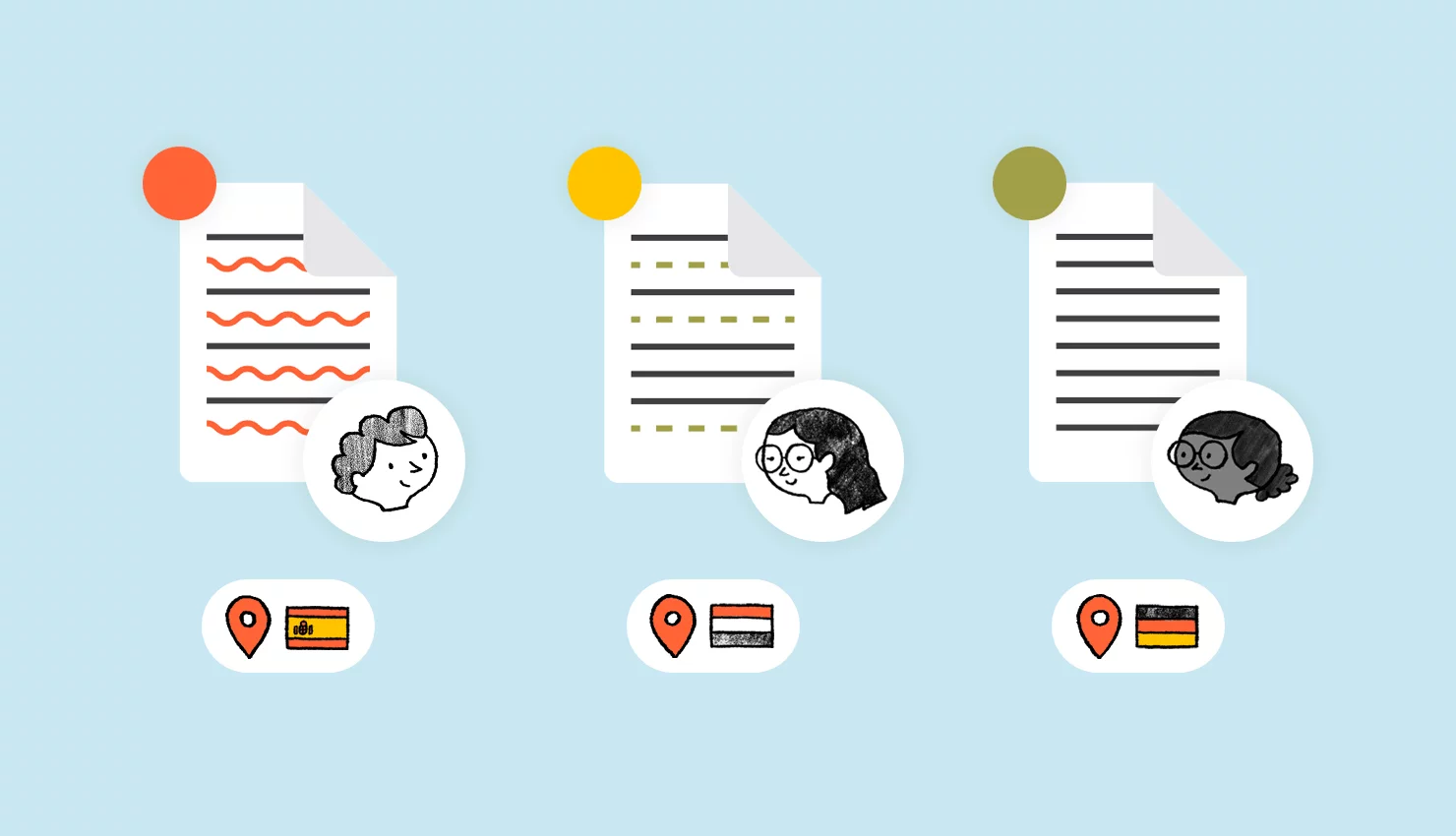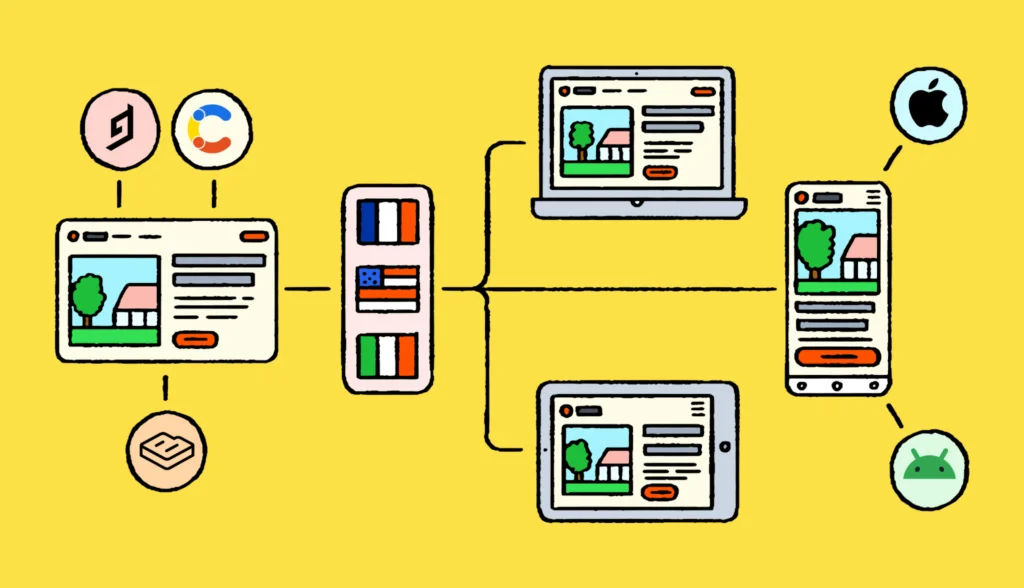The rise of freelancers over the past 10 years has been astronomical, coupled with the recent pandemic, the trend is set to continue. It’s estimated that there are around 160,000 freelance translators, it’s likely that the number is much higher.
There are of course many benefits to working with freelancers. For example, you have budget control and you only need to hire as and when required. There are also no long term employment contracts, allowing businesses to create flexible project-based working relationships.
Unfortunately, there are also drawbacks. I recently asked localization experts and companies frequently working with translators what the biggest challenges are. We have summarized their answers using the six biggest pain points of working with freelance translators, and the best ways to handle them.
1) Freelance translation quality check
For almost any company, the number one pain point is QUALITY. There are many ways of vetting a freelancer, however, when you are translating into a language that you don’t understand, how can you really perform the quality checks required.
Searching for qualified freelancers is one thing, but finding a qualified freelancer that can provide quality work is another. This is a problem faced by businesses, consultants, and agencies in every field.
The biggest pain point is quality. How can you trust a translation in a language you can’t speak? As a consultant, I cannot leave the final quality check to the client, however, If I don’t have internal capabilities the risk of having low-quality work is quite high.Giacomo Castelli, Senior Consultant at P4I
The process of a background check and testing the translator’s skills is time-consuming. Even using freelancer platforms, can sap time and energy that is better spent elsewhere. We all know that time is money, and accepting inadequate translations will only cost you more of both.
Oh and yes, qualifying is the worst and most time-intensive part.Jan Hinrichs, Founder & CEO, Beluga Linguistics
There are ways to manage the quality problem. The first option is to work collaboratively, help the freelancer understand exactly what you are looking for with a clear brief. You also need to make sure that the source text is absolutely right. Providing context is the next step. Adding screenshots to your translation files would be a huge help to anyone working with them, otherwise, your freelancers will go into it blind.
Checking the final translated version is then a process that can be assisted by CAT tools. Computer aided translation will help you identify any obvious errors, it will also allow you to compare the source text with the translated version, there are a number of Quality Assurance checks available. Don’t stop there, sending a finished test translation for proofreading will reveal any inconsistencies in tone and style.
2) Finding a translator
The process of finding a good translator is almost the same as the one you would undertake when hiring a new employee. You need to perform your due diligence, check their portfolio or CV, and perhaps even ask for references. The interview process is usually done online, via SKYPE or Zoom, and of course, managing them is also done remotely.
I think the process of hiring freelancers, in general, is quite tedious and takes a lot of time (if you do it yourself). Finding good candidates, sending them a test, reviewing and verifying the test, onboarding, setting up contracts etc.Mario Pluzny, Localization Manager at Memrise
All this takes time, even if you go through platforms like LinkedIn, Upwork or ProZ.com. You could always turn to an agency, but that can be expensive and the quality varies. The question remains, is it worth working with a freelance translator?
If you can find a good freelancer, absolutely yes. The goal is always to develop a long-term working relationship that works well for both parties. But how do you find good freelance translators?
As we mentioned above, you can always start with freelancer platforms. For example Upwork and ProZ are a great place to begin your search, however instead of sifting through hundreds of profiles, make sure you narrow your search using the filters, or, provide a brief and only allow freelancers with certain criteria to apply.
This will help to speed the process up a little bit. You can also utilize LinkedIn, this is a great option as you can at least get some professional recommendations from other companies that can vouch for the freelancer.
Lastly you can go through a platform like gengo.com. Specifically for freelance translators, each one must undergo quality checks. Gengo in particular only approves 3% of applicants ensuring a high level of freelancer ability.
3) Industry Specifics
If finding a reliable, freelance translator isn’t hard enough, you also need to take into account the intricacies and specifics of your market, product, and niche. This is where things can get really tricky, even when working with a professional freelance translator. Finding a specialist will take longer, it will almost certainly cost more money and there is a good chance that you will need to join the queue of other clients that require the freelancer’s services.
There is also a concern that some freelancers claim to have knowledge in a specific niche, when in fact that’s not the case. This of course reverts back to the question of quality and how to check it, it’s a recurring problem nonetheless.
Translators can choose many different fields, including some they know nothing about, without having to justify or provide referencesSeverine George, translator
There is no real fast way around this pain point, especially if you want to go down the freelance translator route. Depending on just how niche your industry is, will determine how fast you can find a reliable freelancer. If you are planning to translate into more than one language, it’s almost a given that this whole process could take months – for any business that’s just not viable.
Again, one option is to turn to LinkedIn and look for peers that can recommend a freelancer. The other option is to work with a freelance translator and have the text checked by a third-party translation company for verification.
I specialise in technical translations, and engineers often tell me that one big challenge for them is finding a translator with a genuine understanding of the technical material they need translating”Rachel Waddington, freelance translator
In short, if you find good freelance translators with knowledge and experience in your industry, make sure you keep hold of them, because they can be worth their weight in gold.
4) Availability of freelancers
Looking for freelance translators in rare languages is another stumbling block for many companies. If you are planning to take your brand global, you will need to translate and localize your content into languages that may only be spoken by a million people or less.
The other pain point is the availability of freelancers. Highly proficient translators are in high demand, and there’s a risk to find them busy when you need them.Sergey Butkov, freelance translator, editor & LQA tester
Finding a freelancer that can translate content into a lesser spoken language will again take up time and resources. As we have already mentioned, finding a reliable freelancer can be tricky, and those that are good, tend to have plenty of work. This again reflects in their availability and the speed at which translations can be performed.
Planning your translation and localization is key to managing your timeframes and deadlines. Especially when working with freelancers or agencies that are working in more specific language groups or niches.
Using a workflow management tool allows you and your team to collaborate, manage, and review translations in a productive, flexible, and efficient way.
5) Establishing trust with the translator
Although the process of finding a translator is tedious, it has to be done once. Then it’s all about building your relationship, understanding, and overall trust with each other. The good old saying, don’t let go of something good is certainly the case with freelance translators.
I think the main challenge, or the one I like to pay more attention to, is building the relationship. That may be a long process, involving many stakeholders and not necessarily going where you want it to go. It needs a lot of tweaking and thinking, but I also find it the most rewarding.Giada Gerotto, localization vendor management consultant
Once you have found the right person for your translation jobs, make sure you stay in constant dialogue, support them where you can, and make sure that they have all the tools needed to perform the translations to the best of their ability – we have thought about this too.
Encouraging the use of a collaborative translation tool allows you and your team to work simultaneously on translation projects, avoiding miscommunications, keeping everyone smiling, and working towards the same goal. You can even integrate productivity tools such as Asana, Slack, and Zendesk to help with communication, task management, and deadlines.
I do believe trust building is the most important point of concern for everyone involved. The ultimate goal is to establish a trusted partner relationship. This is a solid, sound approach whereby business relations are seen as an asset that must be nurtured and cultivated over medium and long term. ….The bottom line of this approach is that it generates commitment, trust, and happy, satisfied clients – ideally.Eduardo Nunes
Trust building with any team member, whether it be internal or in the case of freelancers, external, is vital to the success of any company. Working together on a translation project requires a process that can take time, but when it’s given time, will almost always provide great results.
6) Flexibility in CAT tools
Flexibility is a key attribute that freelance translators can offer. However, when it comes to working with CAT (Computer Aided Translation) tools, not all freelance translators are so ready to adapt. There are many reasons for this, but most freelancers are set in their way of working, typically they like to refrain from ‘systems’ and more rigid work conditions. They are after all freelancers.
Working with CAT tools is not only a sensible way to manage translations, but it also allows you to focus on the project as a whole, rather than smaller broken up elements that can easily be mismanaged.
Translators usually get used to working for specific Clients, specific content and specific CAT Tools, and they get fond to all that. They have preferences.Paula Manzur, Deployment Manager at RWS Moravia
CAT tools are designed to make the translation and localization process faster, easier, and more efficient for everyone involved, including freelance translators. While you can’t encourage every freelancer to jump on board, convincing them to try will save you untold amounts of trouble further down the road.
To wrap it up – is it worth working with freelance translators?
If we could summarize with just one word then we would, but that’s not how we do things at Lokalise. Is it worth working with freelancers? The answer is yes, but you need to make the most of the tools you have available to make the process seamless and cost-effective. Using Lokalise can take away many of the pain points mentioned here, but we can’t remove them all.
Like with any translation project, you need to find the right talent. As the old saying goes – ‘if a job’s worth doing, it’s worth doing well’. So take the time to find the right person and then use all the tools available to help make the process as easy and pain free and possible.
To see how Lokalise tools can help your business become more efficient in the translation and localization process, get in touch or sign-up for our 14-day free trial.




